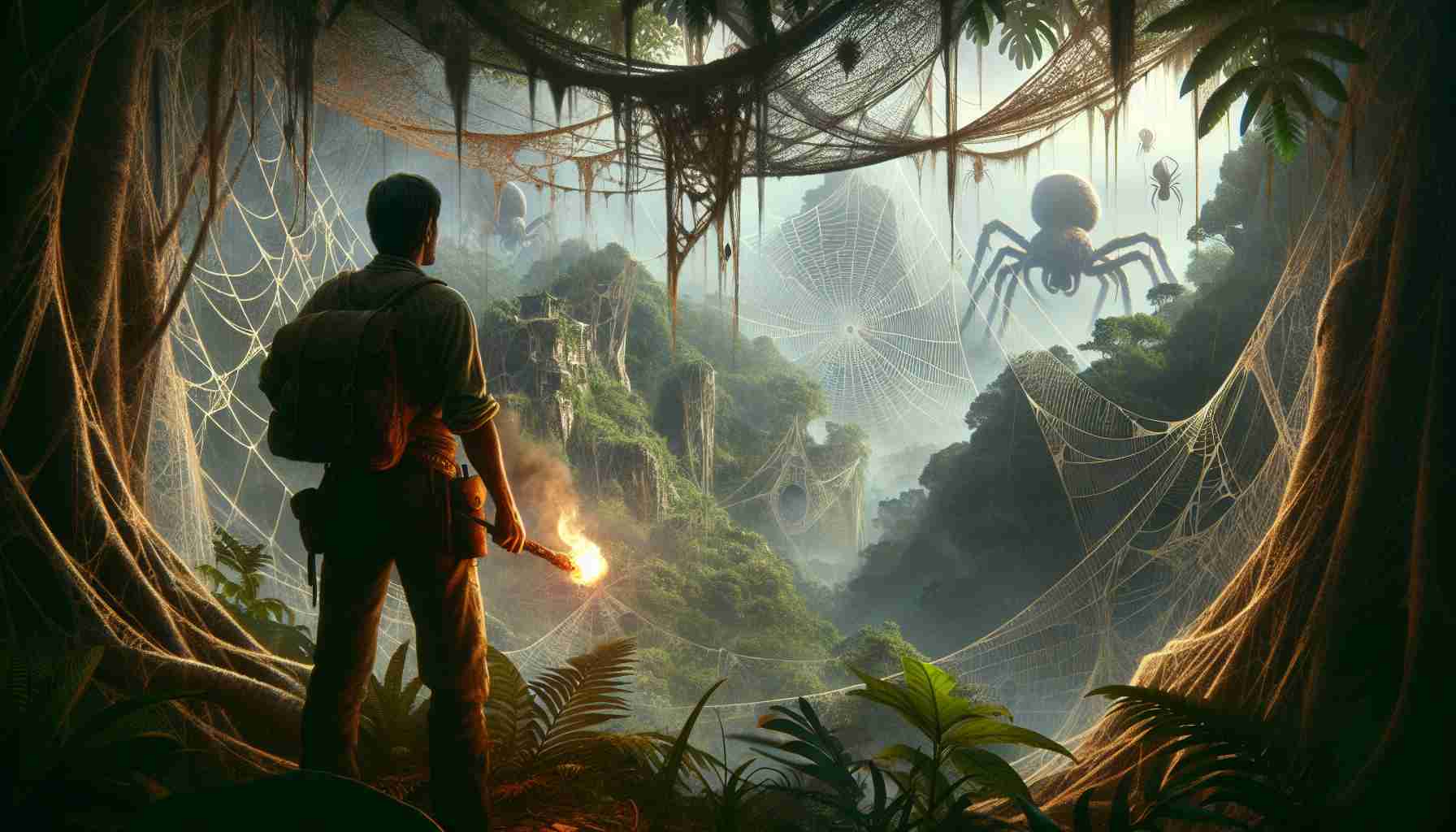In a land far removed from the bustling cities of today, deep beneath the surface of what is now a barren plain, lies a treasure trove of ancient relics. Unearthed by a team of intrepid scientists, these fossils paint a vivid picture of a bygone era brimming with life and lush greenery. Plants dating back millennia, trapdoor spiders lurking beneath dense foliage, giant cicadas filling the air with their song – all inhabitants of a once-thriving tropical paradise.
One such remarkable find is the fossil of Megamonodontium mccluskyi, a giant spider that roamed the Earth between 11 and 16 million years ago, during the Miocene period. This ancient arachnid, measuring a staggering 23.31 millimeters in length, provides a unique glimpse into a time when Australia was a vastly different landscape. Despite its size, this fossil is a rare discovery, one of only four spider fossils ever found on the Australian continent.
Through meticulous examination using cutting-edge scanning electron microscopy, researchers have been able to uncover intricate details of this prehistoric creature. The study not only sheds light on the evolutionary history of these mysterious arthropods but also offers valuable insights into the climatic conditions that prevailed in ancient Australia. The presence of the fossil in sediment layers that once supported a tropical jungle hints at a vastly different climate from the arid one we see today.
As the world grapples with the impacts of climate change, discoveries like Megamonodontium mccluskyi serve as a stark reminder of the Earth’s ever-changing nature. By piecing together the puzzle of the past, scientists hope to better understand the forces that have shaped our planet and anticipate how they might continue to shape our future. Through collaboration and innovation, we continue to unlock the secrets of the ancient spider kingdom, unraveling the mysteries of a time long forgotten.
Exploring the Depths of the Ancient Spider Kingdom: Uncovering New Revelations
In the ongoing quest to unearth the secrets of the ancient spider kingdom, recent expeditions have yielded fascinating discoveries that offer fresh perspectives on the world of prehistoric arachnids. While the fossil of Megamonodontium mccluskyi remains a monumental find, there are additional intriguing aspects awaiting exploration in this mysterious realm of ancient spiders.
What other fascinating spider species inhabited this ancient world?
While Megamonodontium mccluskyi has captured much attention, there is a myriad of other spider species that once roamed the ancient landscape. Research suggests the existence of diverse arachnid communities, each adapted to specific ecological niches, waiting to be revealed through further excavation and analysis.
What ecological roles did these ancient spiders play in their ecosystems?
Understanding the ecological roles of ancient spiders is crucial in piecing together the intricate web of interactions that sustained prehistoric environments. By investigating the feeding habits, predatory behaviors, and habitat preferences of these long-extinct arachnids, scientists can gain insights into the functioning of ancient ecosystems and their potential relevance to modern biodiversity conservation.
Challenges and Controversies:
One key challenge in studying ancient spider kingdoms lies in the preservation of delicate specimens over millions of years. Fossils may degrade or become distorted, posing difficulties in accurately reconstructing the morphology and behavior of these ancient creatures. Additionally, controversies may arise in interpreting fossil evidence, leading to debates over evolutionary relationships and ecological dynamics in ancient spider communities.
The Advantages and Disadvantages of Uncovering Ancient Spider Kingdoms:
An advantage of delving into the ancient spider kingdom is the wealth of information it provides about past climates, ecosystems, and evolutionary trajectories. By deciphering the mysteries of ancient spiders, researchers can enhance our understanding of Earth’s history and inform conservation efforts. However, a disadvantage lies in the complex nature of interpreting ancient spider fossils, which requires meticulous scrutiny and may involve uncertainties in drawing definitive conclusions about these ancient arachnids.
For further exploration of the fascinating world of ancient spiders, interested readers can visit National Geographic for additional insights on paleontology and ancient creatures.
Through ongoing research and collaboration, scientists are poised to unravel more secrets of the ancient spider kingdom, shedding light on the enigmatic past and its relevance to the present and future of our planet.
 Groundbreaking Advancements in Quantum Acoustodynamics
Groundbreaking Advancements in Quantum Acoustodynamics  New Proteomics Advancements
New Proteomics Advancements  Quantum Innovation: Revolutionizing Aerospace Missions
Quantum Innovation: Revolutionizing Aerospace Missions  Innovative Collaboration Between Two Tech Giants
Innovative Collaboration Between Two Tech Giants  Futuristic Transformations in Electric Vehicle Lineup by Stellantis
Futuristic Transformations in Electric Vehicle Lineup by Stellantis  New Launch Schedule for Stellantis Electric Vehicles
New Launch Schedule for Stellantis Electric Vehicles  Groundbreaking Innovations in Electric Vehicle Technology
Groundbreaking Innovations in Electric Vehicle Technology  Title: GreenWave Partners with Local Parks to Expand Eco-Friendly Amenities
Title: GreenWave Partners with Local Parks to Expand Eco-Friendly Amenities  Leading the Way to Sustainable Transportation
Leading the Way to Sustainable Transportation 